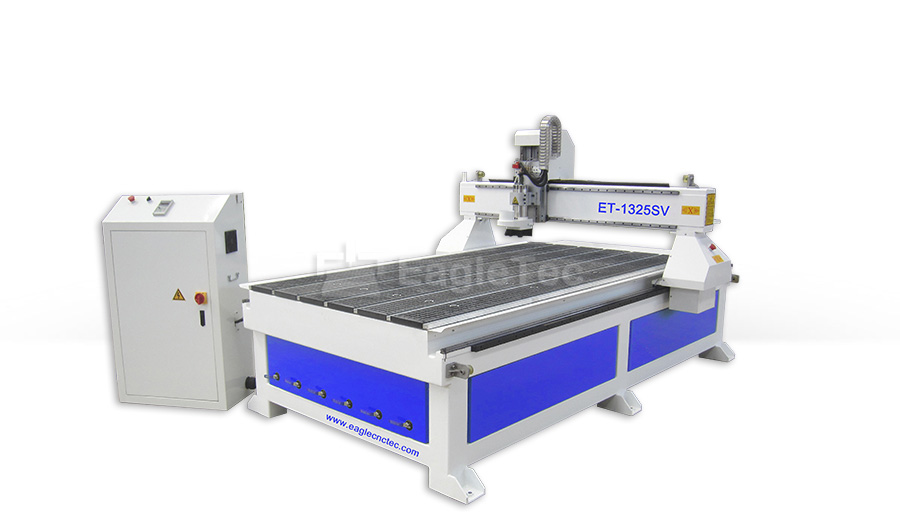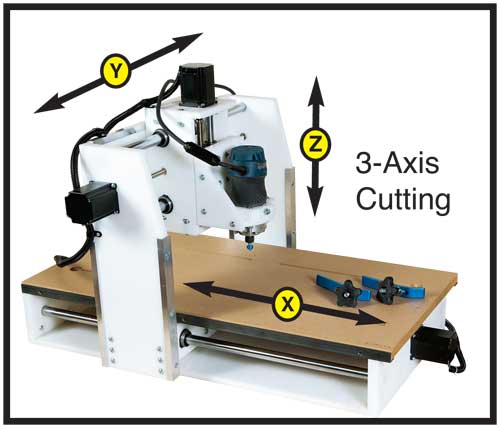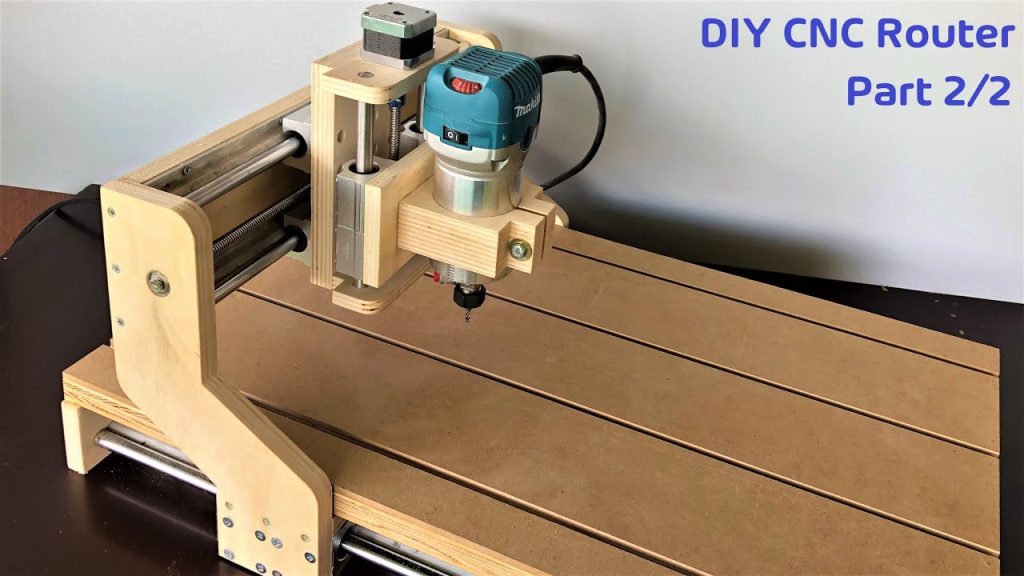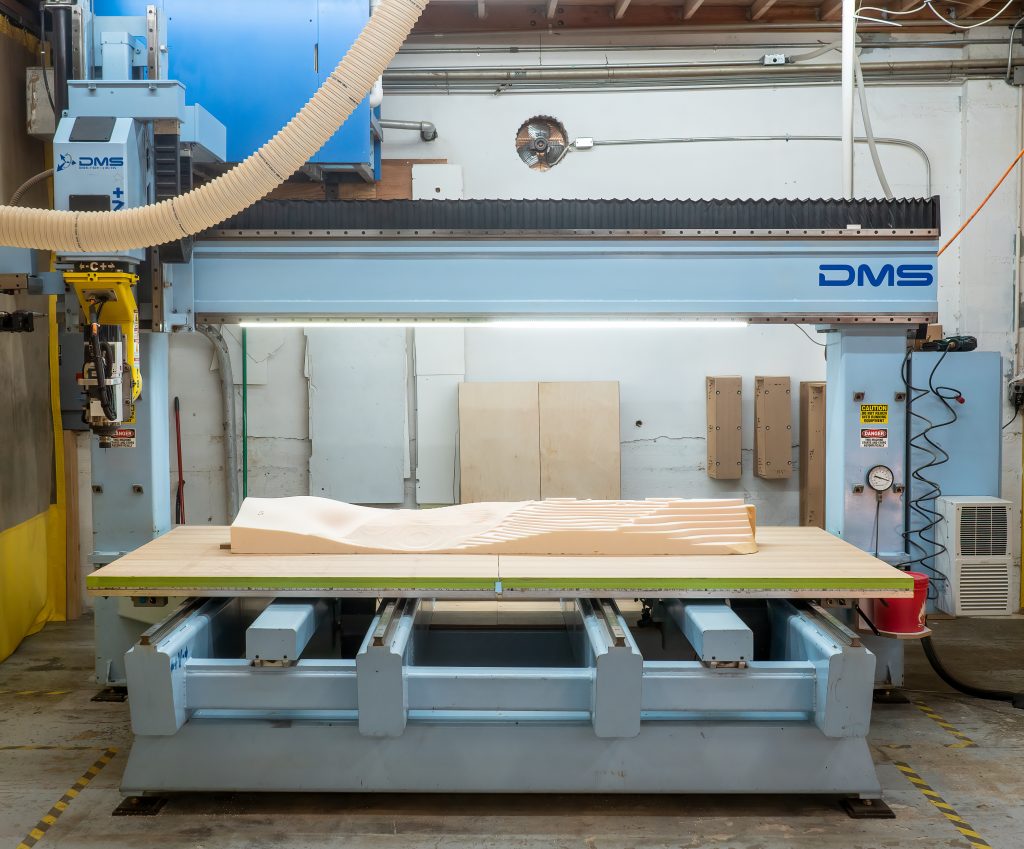Table of Contents
CNC routers are essential tools in modern manufacturing, enabling the precise cutting of various materials. But how deep can these sophisticated machines cut? This is a common question among DIY enthusiasts and hobbyists looking to invest in a CNC router. In this article, we’ll dive into the depths of CNC routers, exploring the factors that determine how deep they can cut and the best practices to achieve optimal results.
A CNC router can cut up to 3 inches deep, depending on the size of the bit used and the material being cut. However, it’s important to note that cutting too deep can cause the bit to break or damage the machine. It’s recommended to start with a shallow cut and gradually increase the depth until the desired result is achieved. Always follow the manufacturer’s guidelines and use proper safety measures when operating a CNC router.
How Deep Can a CNC Router Cut?
CNC routers have revolutionized the woodworking and manufacturing industries by providing fast, precise, and efficient cutting capabilities. One of the most common questions that people ask about CNC routers is how deep they can cut. In this article, we will explore the cutting depth capabilities of CNC routers and what factors may affect the depth of the cut.
Factors that Affect Cutting Depth
The cutting depth of a CNC router can vary depending on several factors. The most critical factor is the size and power of the router. Generally, larger and more powerful routers can cut deeper than smaller ones. However, the type of material being cut also plays a significant role in determining the cutting depth. Harder materials, such as metal or dense woods, require more power to cut, and the depth may be limited.
Another factor that affects the cutting depth is the type of cutting tool being used. CNC routers can use various cutting tools, such as end mills, router bits, and drills. The size and shape of the cutting tool can also determine the maximum depth of cut.
Maximum Cutting Depth for Different Materials
The cutting depth for different materials can vary significantly. Here is a table that shows the maximum cutting depth for some common materials:
| Material | Maximum Cutting Depth |
|---|---|
| Wood | 3 inches |
| Aluminum | 0.5 inches |
| Acrylic | 0.75 inches |
| Plastic | 0.75 inches |
Benefits of CNC Router Cutting Depth
The cutting depth of a CNC router is essential for several reasons. First, it determines the thickness of the material that can be cut, which is critical for manufacturing products with specific sizes and dimensions. Second, it can affect the quality of the cut. Deeper cuts may require multiple passes, leading to a rougher surface finish. Finally, the cutting depth can influence the overall speed and efficiency of the cutting process.
CNC Router Cutting Depth vs. Other Cutting Methods
Compared to traditional cutting methods such as saws and drills, CNC routers offer several advantages in terms of cutting depth. CNC routers can cut deeper and more accurately, with minimal waste and faster processing times. Additionally, CNC routers can cut complex shapes and designs, making them ideal for creating intricate details or patterns.
Conclusion
In conclusion, the cutting depth of a CNC router is a critical factor in determining its capabilities. The depth of cut can vary depending on several factors, including the size and power of the router, the type of material being cut, and the cutting tool being used. By understanding the cutting depth capabilities of CNC routers, manufacturers and woodworkers can make informed decisions about which tools to use for their specific needs.
Frequently Asked Questions
Here are some commonly asked questions about the depth capabilities of a CNC router.
What is the maximum depth a CNC router can cut?
The maximum depth a CNC router can cut depends on several factors such as the type of material being cut, the size and power of the router, and the type of cutting bit being used. Generally, a CNC router can cut up to 3 inches deep into soft materials such as wood and plastic, while harder materials like metal and stone may only allow for a depth of 0.5 to 1 inch. It is important to note that cutting too deeply can cause the bit to break or damage the machine, so it is necessary to follow the manufacturer’s recommended cutting depths.
Additionally, the cutting speed and feed rate also affect the depth of the cut. Slower speeds and higher feed rates can result in a deeper cut, but may also increase the risk of burning or melting the material. It is important to find the right balance between speed and depth to achieve the desired results.
What type of bit is best for cutting deep into materials?
The type of cutting bit used can greatly affect the depth capabilities of a CNC router. For deep cuts, it is recommended to use a spiral or straight flute bit with a long cutting length. These bits are designed to clear away chips and debris from the cut, allowing for a deeper and cleaner cut. However, it is important to also consider the material being cut and choose a bit with the appropriate geometry and coatings to prevent wear and breakage.
It is also important to properly maintain and sharpen the cutting bits to ensure optimal performance and longevity. Dull or damaged bits can cause uneven cuts and decrease the depth capabilities of the router.
What precautions should be taken when cutting deep into materials?
When cutting deep into materials, it is important to take several precautions to ensure safety and prevent damage to the machine. First, the cutting bit should be properly secured and tightened to prevent it from slipping or becoming loose during the cutting process. It is also recommended to use a dust collection system to prevent the accumulation of debris and chips, which can cause the bit to break or damage the machine.
Furthermore, it is important to monitor the temperature of the material and cutting bit during the cutting process. High temperatures can cause the material to melt or warp, while also increasing the risk of the bit breaking or wearing down. If necessary, it may be helpful to use a coolant or lubricant to reduce heat and friction during the cutting process.
Can a CNC router cut all the way through a material?
Yes, a CNC router can cut all the way through a material, but the ability to do so depends on the material’s thickness and characteristics. Softer materials such as wood and plastic can be cut all the way through with relative ease, while harder materials such as metal and stone may require specialized bits and cutting techniques to achieve a complete cut.
Additionally, it is important to consider the depth capabilities of the CNC router and adjust the cutting parameters accordingly to avoid damaging the machine or breaking the cutting bit.
What factors affect the accuracy of a deep cut on a CNC router?
Several factors can affect the accuracy of a deep cut on a CNC router. One of the most important factors is the stability of the machine and the rigidity of the workpiece. Any movement or vibration during the cutting process can cause the bit to deviate from the desired path, resulting in an inaccurate cut.
The accuracy of the cut can also be affected by the type of bit being used, the cutting speed and feed rate, and the depth of the cut. It is important to find the right balance between these factors to achieve the desired level of accuracy.
In conclusion, the depth of cut of a CNC router depends on a variety of factors. The rigidity of the machine, the power of the spindle, the type of bit being used, and the material being cut all play a role in determining how deep the router can cut.
It’s important to make sure that the machine is properly calibrated and that the bit is sharp to ensure the best results. Additionally, it’s crucial to adjust the cutting speed and feed rate to match the material being cut to avoid damaging the router or the material.
Ultimately, with the right machine and setup, a CNC router can cut to impressive depths. However, it’s important to always prioritize safety and proper maintenance to ensure the longevity and effectiveness of the machine.
Request a quote today!
[contact-form-7 id="1578" title="Contact form"]
Please compress the file into a ZIP or RAR file before uploading. Alternatively, send through your RFQ by email.
enquires@unitymanufacture.com





